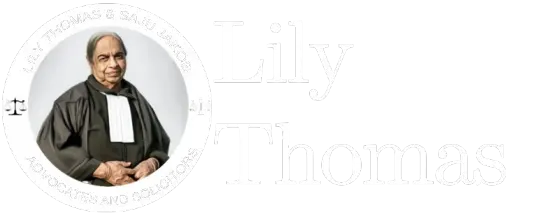Case Title:- GENERAL MANAGER, U.P. COOPERATIVE BANK LTD vs. ACHCHEY LAL & ANR.
Citation:- 2025 INSC 1175
Date:- 11.09.2025
Hon’ble Supreme Court Bench:- JUSTICE J.B. PARDIWALA & JUSTICE SANDEEP MEHTA
The Hon’ble Supreme Court discussed the tests to determine employer-employee relationship to be kept in mind while deciding matters arising from legislations like Industrial Disputes Act, 1947, the Factories Act, 1948 etc. They are, the Control Test, Organisation (Integration) Test, Multifactor Test, and the Refined Multifactor Test, which have been evolved over various precedents.
The Hon’ble Court explained that the existence of an employer–employee relationship is a mixed question of fact and law and depends on the degree of control, supervision, integration, and economic dependence in each case.
FEW TESTS TO DETERMINE EMPLOYER EMPLOYEE RELATIONSHIP TO BE KEPT IN MIND WHILE DECIDING MATTERS ARISING FROM LEGISLATIONS LIKE INDUSTRIAL DISPUTES ACT, 1947, THE FACTORIES ACT, 1948 ETC:
Control Test
- The control test postulates that when the hirer has control over the work assigned and the manner in which it is to be done, an employer-employee relationship is established. The control test is derived from common law application in vicarious liability claims.
- The earliest instance of applying the control test in India is in Shivanandan Sharma v. Punjab National Bank Ltd. reported in AIR 1955 SC 404. Here, a claim under the Industrial Disputes Act arose as to whether a head cashier was the bank’s employee. The bank had an agreement with a contracted treasurer who nominated people to work for discharging function of the bank under the agreement, including the cashier in question. The court held that although the treasurer chose the nominees who discharged the functions, yet the bank had complete control over the nominee’s disciplinary matters, leave of absence, how the nominees discharged their functions, and, importantly, their salaries were paid by the treasurer from the funds provided by the bank. It was held that the bank manager had the same degree of control over the nominees as he did over numerous other employees, and thus an employer-employee relationship existed. The bank also had the right to select bank personnel who would have the authority to supervise how the cash department conducted its work. The court concluded that the cashier was an employee of the bank. The scope of indirect employment was expounded as under:
“If a master employs a servant and authorises him to employ a number of persons to do a particular job and to guarantee their fidelity and efficiency for a cash consideration, the employees thus appointed by the servant would be equally with the employer, servants of the master.”
- While Shivanandan Sharma (supra) was the first instance of the control test being applied, an important step in the test’s evolution was in Dharangadhara Chemical Works Ltd. v. State of Saurashtra reported in (1957) 1 LLJ 477. The dispute was whether agarias (salt workers) were employees and whether the claim under the Industrial Disputes Act 1947 was maintainable. To establish that the hirer had control over the hired person, it was ruled that control must exist in two aspects. First, control over the nature of the work performed and, secondly, the manner in which the work is conducted. It was argued that since agarias assisted several persons in performing work, they were independent contractors.
- For the court, the true difference between the workers and independent contractors was whether the work was being committed 33 for oneself or a third party. The existence of external help would not rule out an employer-employee relationship. The court opined that the greater the degree of control, the more likely the hired person would be an employee. Accordingly, the agarias were held as employees and eligible for benefits under the Industrial Disputes Act 1947.
- The court enunciates the manner to make this distinction as under:
“The correct method of approach, therefore, would be to consider whether having regard to the nature of the work there was due control and supervision by the employer”
- Thus, the control test was expanded to mean due control and supervision. In numerous cases, the control test adopted in Dharangadhara (supra) remained the sole factor determining employer-employee relationship. The degree and level of control required would depend on the facts and circumstances of each case.
Organisation/Integration Test
- The first instance of the shift from the control test as a sole determinative factor was in Silver Jubilee Tailoring House v. Chief Inspector of Shops and Establishments reported in (1974) 3 SCC 498. This Court observed that the earlier reliance on the control test was attributed to the agrarian economy, where masters often exercised control over workers. This occurred due to masters having more knowledge, skill and experience. The shift to a multifactor test is due to modern work being conducted by professionals where masters lack the technical expertise to direct the manner in which the work is undertaken. The court arrived at these conclusions relying on judgements in the Market Investigations Ltd. v Minister of Social Security reported in (1969) 2 WLR 1, Cassidy v Ministry of Health reported in (1951) 2KB 343, Montreal v Montreal Locomotive Works Ltd reported in 1947 1 DLR 161 (Privy council). In Silver Jubilee (supra) reliance was placed on a combination of the organisation test (also known as the integration test) as interpreted in the Market Investigations Ltd. (supra), Cassidy (supra), Montreal Locomotive Works (supra) and the control test used in India.
- The organisation test looks at the degree of integration in the work committed in the hirer’s primary business with the understanding that the higher the level of integration, the more likely the worker is to be an employee. A combination of control and integration tests allows the professional workers to be classified as employees, notwithstanding a lack of control over the manner of work. Furthermore, the existence and potential use of factors beyond the control and integration in future cases was also recognised. This opened the path for the multifactor test.
Multiple Factor test
- The multifactor test includes:
- a) Control
- b) Ownership of the tools
- c) Integration/Organisation
- d) Chance of profit
- e) Risk of loss
- f) the master’s power of selecting his servant
- g) the payment of wages or other remuneration
- h) The master’s right to control the method of doing the work, and
- i) The master’s right of suspension or dismissal.
- In Steel Authority of India Limited v. National Union Waterfront Workers, reported in 2017 NLS Bus L. Rev. 20, it was opined that where sham arrangements exist, the Contract Labour (Regulation and Abolition) Act, 1970 would not apply, and workers would be deemed employees and have the right to raise an industrial dispute in the same manner as an employee.
- To identify whether sham arrangements exist, this Court in Workmen of Nilgiri Coop. Mktg. Society Ltd. v. State of T.N. reported in (2004) 5 SCC 514 ruled that piercing the veil was necessary. Whether the arrangement was a sham was not considered as a question of law. Such a determination must be adjudicated based on the evidence adduced in the court by either party and not merely by referring to the provisions. The relevance of factors other than the control and integration to determine whether the workers are employees or independent contractors was brought out. The court examined the following factors:
- a) who is the appointing authority?
- b) who is the paymaster?
- c) who can dismiss?
- d) the duration of an “alternative service”;
- e) the extent of control and supervision;
- f) the nature of the job, e.g. whether it is professional or skilled work;
- g) nature of establishment;
- h) the right to reject.
- This Court in Bengal Nagpur Cotton Mills v. Bharat Lal reported in (2011) 1 SCC 635 laid down two factors to be considered to determine the true nature of the hiring entity, i.e., whether it is the principal employer or contractor:
(i) Whether the principal employer pays the salary instead of the contractor; and
(ii) Whether the principal employer controls and supervises the work of the employee?
Refinement of the multifactor test
- The courts, over the years, have refined the scope of the multifactor test by adding various factors based on the facts and circumstances. This Court, in many cases, has applied the refinement of the multifactor test.
- In Sushilaben Indravadan Gandhi v The New India Assurance Company Limited, reported in (2021) 7 SCC 151, this Court revisited the distinction between a contract of service and a contract for service. After analysing Market Investigations Ltd. (supra), Cassidy (supra) and Montreal Locomotive Works (supra), the multifactor test was reiterated, consisting of the following factors:
- a) Control over the work and manner in which it is conducted
- b) Level of integration into employers’ business
- c) Manner in which remuneration is disbursed to workers
- d) Economic control over workers
- e) Whether work being conducted is for oneself or a third party
- In Sushilaben (supra) priority was given to factors of control and mode of remuneration, noting these would ordinarily suffice to identify the true nature of the relationship unless other contractual terms indicated otherwise.
- In Sushilaben (supra) the articulation of the control test has been given importance as it varies from that in Balwant Rai Saluja v Air India Ltd. reported in 2014 9 SCC 407. This was elucidated as under: “The three-tier test laid down by some of the English judgments, namely, whether wage or other remuneration is paid by the employer; whether there is a sufficient degree of control by the employer and other factors would be a test elastic enough to apply to a large variety of cases.” (emphasis added)
- The use of the term “sufficient degree of control” is in stark contrast to the “effective and absolute control” ruling in Balwant Rai Saluja (supra). However, no reference to Balwant Rai Saluja (supra) was made while discussing the evolution of the various tests.








